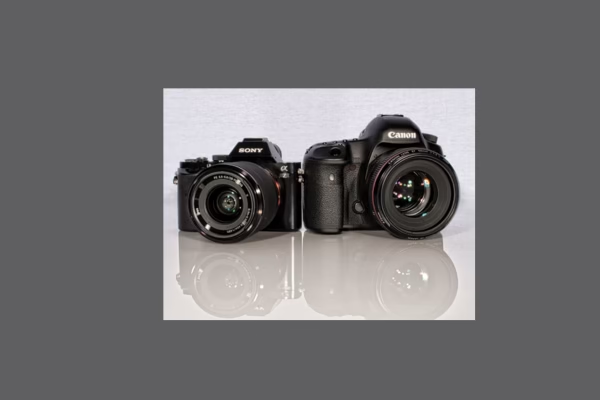 Understanding Camera Sensors: Full-frame vs. Crop Sensors
Understanding Camera Sensors: Full-frame vs. Crop Sensors
When you are buying a new camera or upgrading your gear, one of the most important decisions you’ll make is whether to choose a full-frame or crop sensor. This choice impacts the quality of your images, your creative possibilities, and your overall photography experience. But what exactly do these terms mean, and how do they influence your photography? In this article, we’ll explore the key differences between full-frame and crop sensors, helping you understand the benefits of each and how to select the one that best suits your needs.
What is a Camera Sensor?
Before we get into the specifics of full-frame and crop sensors, it is important to understand what a camera sensor does. The sensor is the heart of your camera, capturing the light that passes through the lens and converting it into an image. The size of the sensor determines how much light is captured, which affects the quality, depth of field, and overall appearance of your photos. Larger sensors typically produce better image quality, especially in low-light conditions, while smaller sensors may struggle to capture detail in darker settings.
Full-Frame Sensors: The Premium Choice
A full-frame sensor is equivalent in size to a 35mm film frame, measuring approximately 36mm x 24mm. This type of sensor is often found in higher-end professional cameras and is beloved for its superior image quality and versatility.
Advantages of Full-Frame Sensors:
Better Low-Light Performance: Full-frame sensors capture more light, which helps to reduce noise and grain in low-light conditions. This makes them ideal for shooting in dim environments or for long exposure photography. The larger sensor allows for better light gathering, producing clearer and sharper images.
Better Dynamic Range and Detail: Full-frame sensors generally offer better dynamic range, meaning they can capture more detail in both the bright highlights and deep shadows. This is essential for creating images with rich tonal depth, especially in high-contrast situations like outdoor or sunrise/sunset photography.
Wider Field of View: Since the sensor is larger, a full-frame camera captures a wider field of view compared to a crop sensor camera. This is particularly beneficial for landscape, architecture, and wide-angle photography, where you want to capture as much of the scene as possible.
Shallow Depth of Field: The larger sensor allows you to achieve a shallower depth of field, which results in a beautifully blurred background (bokeh). This is perfect for portrait photography, as it helps isolate the subject from the background, creating a professional, polished look.
Disadvantages of Full-Frame Sensors:
Higher Price: Full-frame cameras tend to be significantly more expensive than crop sensor models, both in terms of the camera body and lenses. The larger sensor requires more complex technology and materials, making it a premium option.
Bulkier and Heavier: Cameras with full-frame sensors are often larger and heavier, which can be a disadvantage for photographers who need a more portable solution. This can make traveling or street photography more cumbersome.
Expensive Lenses: Full-frame cameras require lenses that are designed for the larger sensor, and these lenses tend to be more expensive. Additionally, full-frame lenses are often heavier and bulkier than their crop sensor counterparts.
Crop Sensors: The Budget-Friendly and Compact Choice
A crop sensor (also known as an APS-C sensor) is smaller than a full-frame sensor, typically measuring around 22mm x 15mm. Crop sensors are commonly found in entry-level and mid-range DSLR and mirrorless cameras. They are ideal for hobbyists and enthusiasts who want great image quality without breaking the bank.
Advantages of Crop Sensors:
Lower Cost: One of the biggest advantages of crop sensors is their price. Cameras with crop sensors are generally more affordable than their full-frame counterparts, making them a great option for photographers on a budget.
Compact and Lightweight: Cameras with crop sensors are often smaller and lighter, making them more portable and easier to carry around. This is especially useful for photographers who prefer a more mobile setup or those doing travel and street photography.
Telephoto Reach: Due to the crop factor (usually around 1.5x or 1.6x), crop sensors effectively extend the focal length of lenses. For example, a 50mm lens on a crop sensor camera will behave like a 75mm or 80mm lens, making crop sensors ideal for wildlife, sports, or any photography that requires extra reach without needing a super-telephoto lens.
Good Image Quality: While crop sensors are smaller, they still produce great image quality for most photography needs, especially in good lighting conditions. Many crop sensor cameras offer impressive resolution, autofocus systems, and fast shooting speeds.
Disadvantages of Crop Sensors:
Reduced Low-Light Performance: Since crop sensors capture less light than full-frame sensors, they tend to produce more noise in low-light situations. This can be a disadvantage when shooting indoors, at night, or in other low-light environments.
Narrower Field of View: The smaller sensor means a crop sensor camera captures a narrower field of view, which can be limiting in certain types of photography, such as wide-angle landscape shots.
Depth of Field: Crop sensors tend to have a deeper depth of field compared to full-frame sensors, which can make it more challenging to achieve the blurred background effect (bokeh) that’s often desirable in portrait photography.
Which Sensor Should You Choose?
The decision between full-frame and crop sensors depends largely on your photography style, budget, and preferences.
If you’re a professional photographer or you prioritize image quality, low-light performance, and a shallow depth of field, a full-frame sensor might be the better choice. It’s ideal for landscape, portrait, and event photography.
If you’re an enthusiast or hobbyist on a budget, or you prefer a more compact and lightweight setup, a crop sensor could offer everything you need at a more affordable price.
Ultimately, both types of sensors have their strengths and weaknesses, so choosing the right one comes down to your specific needs and goals as a photographer.

